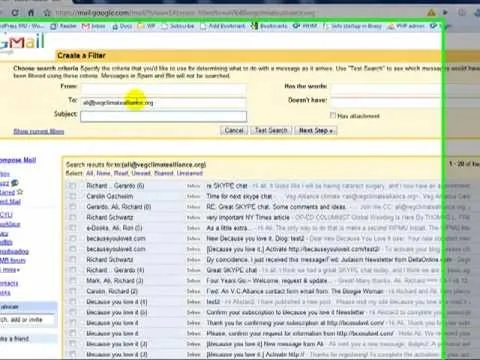Millions Made From Office365 Hacks: Executive Inboxes Compromised

Table of Contents
Common Tactics Used in Office365 Hacks Targeting Executives
Cybercriminals employ various methods to infiltrate Office365 accounts, particularly targeting high-value executives. These tactics are constantly evolving, requiring businesses to stay vigilant and adapt their security measures.
Phishing Attacks
Phishing remains a primary attack vector. Attackers craft convincing emails designed to trick recipients into revealing sensitive information or clicking malicious links.
- Spear Phishing: Highly targeted attacks focusing on specific individuals within an organization, often using personal information to enhance credibility.
- Whaling: A more advanced form of spear phishing specifically targeting high-profile executives (like CEOs and CFOs) or other key decision-makers.
- Social Engineering: Attackers use psychological manipulation to exploit human vulnerabilities, building trust to gain access to sensitive information or systems.
- Malicious Attachments and Links: Emails often contain infected attachments (e.g., Word documents, PDFs) or links leading to compromised websites that install malware or steal credentials. These often appear legitimate, mimicking invoices, company communications, or even seemingly harmless files.
Credential Stuffing and Brute-Force Attacks
Stolen credentials are a lucrative commodity for cybercriminals. They often use stolen credentials obtained from other data breaches to try and access Office365 accounts.
- Credential Stuffing: Attackers use lists of compromised usernames and passwords obtained from various sources (data breaches, dark web marketplaces) to attempt to log into Office365 accounts.
- Brute-Force Attacks: These attacks involve systematically trying various password combinations until the correct one is found. This is more effective against weak passwords.
- Importance of Strong Passwords and MFA: Using strong, unique passwords for each account, combined with multi-factor authentication (MFA), is crucial to mitigating these threats. MFA adds an extra layer of security, requiring a second form of verification (like a code from a mobile app) beyond just a password.
Exploiting Vulnerabilities in Third-Party Apps
Many organizations integrate third-party applications with their Office365 environment to enhance productivity. However, this can introduce security vulnerabilities.
- Unvetted Apps: Using unverified or poorly secured third-party apps can create entry points for attackers.
- API Vulnerabilities: Attackers may exploit vulnerabilities within the APIs (Application Programming Interfaces) of these apps to gain unauthorized access.
- Thorough Vetting: Businesses must thoroughly vet any third-party applications before integrating them with Office365, paying close attention to security certifications and reviews.
Malware and Ransomware Attacks
Malware and ransomware are frequently used in conjunction with other attack vectors.
- Malware Delivery: Malware can be delivered via malicious email attachments, compromised websites, or infected links.
- Ransomware Encryption: Ransomware encrypts sensitive data, rendering it inaccessible unless a ransom is paid. This can lead to significant financial losses and operational disruption.
- Endpoint Protection and Backups: Robust endpoint protection software and regular data backups are essential to mitigate the impact of malware and ransomware attacks.
The Financial Ramifications of Successful Office365 Hacks
The financial consequences of a successful Office365 hack can be catastrophic.
Direct Financial Losses
Direct costs include:
- Ransom Payments: Paying a ransom to regain access to encrypted data.
- Legal Fees: Costs associated with legal investigations and regulatory compliance.
- Regulatory Fines: Penalties imposed by regulatory bodies for data breaches (e.g., GDPR, CCPA).
- Average Cost: The average cost of an Office365 data breach can range from hundreds of thousands to millions of dollars, depending on the severity and impact.
Reputational Damage
A successful breach can severely damage a company's reputation:
- Loss of Customer Trust: Customers may lose confidence in the organization's ability to protect their data.
- Loss of Business Opportunities: Reputational damage can lead to lost sales and business partnerships.
- Proactive Reputation Management: A robust reputation management strategy is crucial to mitigate the negative impact of a data breach.
Loss of Intellectual Property
The theft of sensitive data can have devastating long-term consequences:
- Trade Secrets: The loss of valuable trade secrets can give competitors a significant advantage.
- Customer Information: The exposure of customer data can lead to identity theft and legal liabilities.
- Financial Records: The theft of financial records can have severe financial and legal implications.
- Data Loss Prevention (DLP): Implementing DLP measures is essential to protect sensitive data from unauthorized access or exfiltration.
Protecting Your Organization from Office365 Hacks
Protecting your organization requires a multi-layered approach:
- Implement Multi-Factor Authentication (MFA): MFA is critical for adding an extra layer of security, significantly reducing the risk of unauthorized access, even if credentials are compromised.
- Employee Security Awareness Training: Regular training sessions educate employees on identifying and avoiding phishing scams, malicious links, and other threats.
- Strong Password Policies: Enforce the use of strong, unique passwords and password managers to prevent credential stuffing and brute-force attacks.
- Regular Security Audits and Penetration Testing: Identify vulnerabilities in your systems and address them proactively.
- Use Advanced Threat Protection (ATP): Leverage Microsoft's Advanced Threat Protection to detect and block malicious emails and activities.
- Monitor User Activity: Implement systems to monitor user activity for suspicious behavior, allowing for early detection of potential breaches.
- Data Backup and Recovery: Regularly back up your data to a secure, offsite location to ensure business continuity in case of a ransomware attack or data loss.
Conclusion: Safeguarding Your Business from Office365 Hacks
Office365 hacks, especially those targeting executive inboxes, pose significant financial and reputational risks to businesses of all sizes. The financial consequences of a successful attack, including direct losses, reputational damage, and the loss of intellectual property, can be devastating. By proactively implementing robust security measures such as MFA, employee training, regular security audits, and advanced threat protection, organizations can significantly reduce their vulnerability to these attacks. Don't wait until it's too late. Take immediate steps to secure your Office365 environment and prevent becoming another victim of Executive Email Compromise. For further information on securing your Office365 environment, explore resources from Microsoft and reputable cybersecurity firms. Protecting your business from Office365 hacks is an investment in its future.

Featured Posts
-
 Prince Andrew Underage Girl Allegation New Evidence Surfaces In Undercover Video
May 12, 2025
Prince Andrew Underage Girl Allegation New Evidence Surfaces In Undercover Video
May 12, 2025 -
 Cooyah Launches New Grand Slam Track Collection Style And Performance
May 12, 2025
Cooyah Launches New Grand Slam Track Collection Style And Performance
May 12, 2025 -
 The Impact Of Cbss Vma Simulcast On Mtvs Viewership
May 12, 2025
The Impact Of Cbss Vma Simulcast On Mtvs Viewership
May 12, 2025 -
 Yankees Opening Day Lineup Aaron Judges Position And Boones Plan
May 12, 2025
Yankees Opening Day Lineup Aaron Judges Position And Boones Plan
May 12, 2025 -
 Boris Dzhonson Kommertsializatsiya Politicheskogo Imidzha
May 12, 2025
Boris Dzhonson Kommertsializatsiya Politicheskogo Imidzha
May 12, 2025
